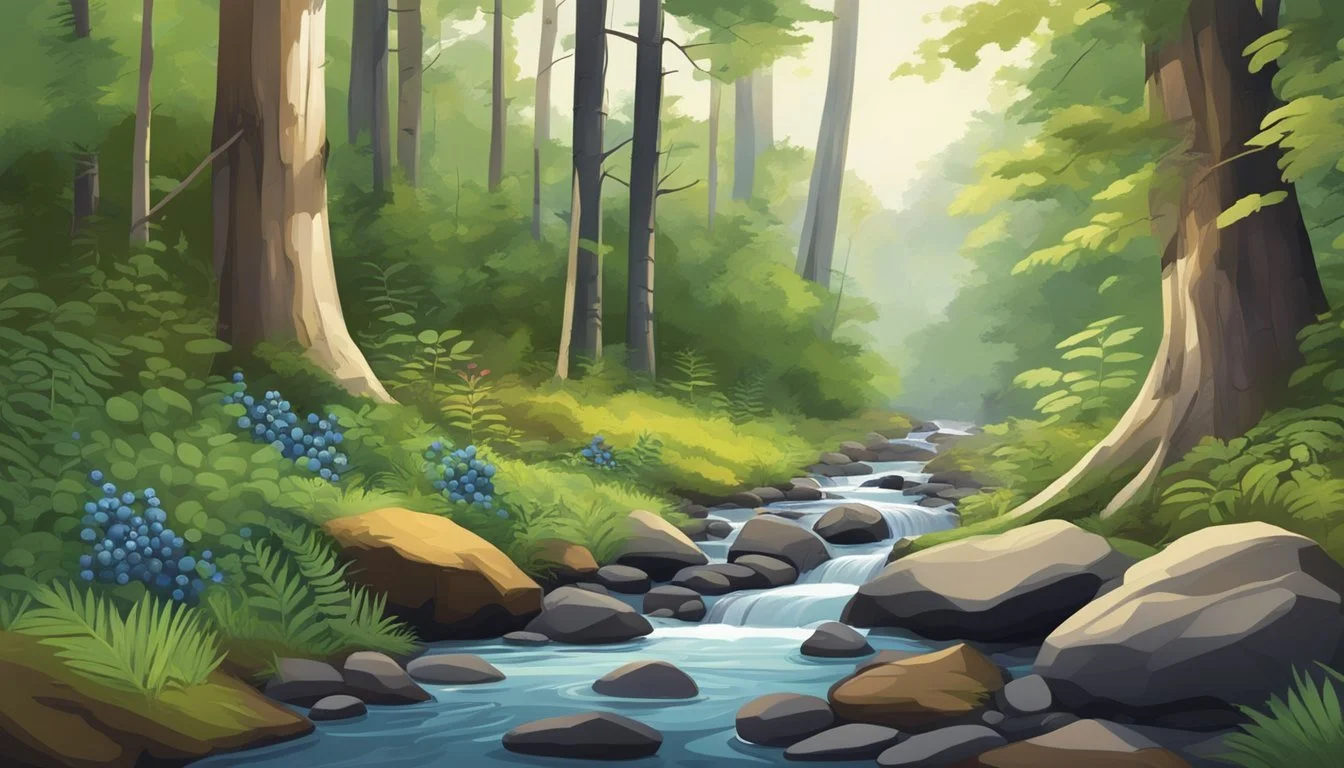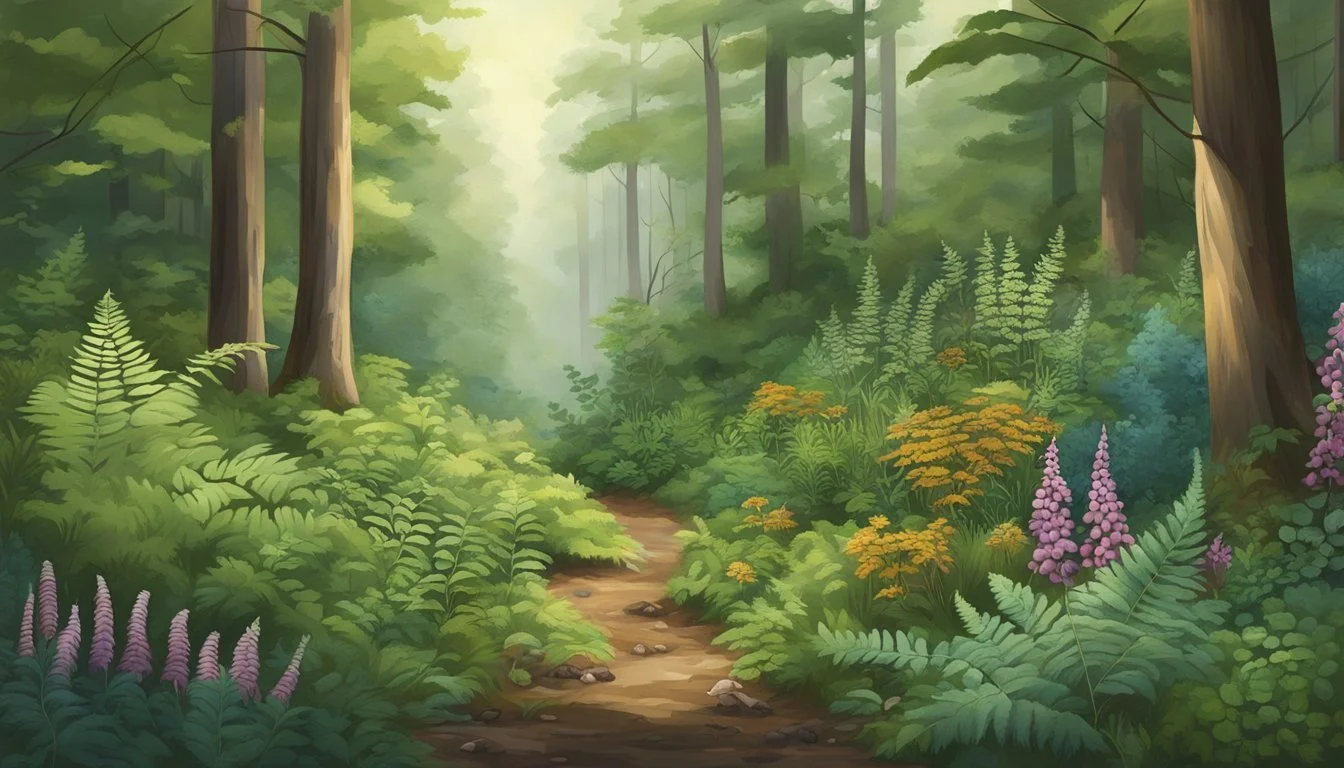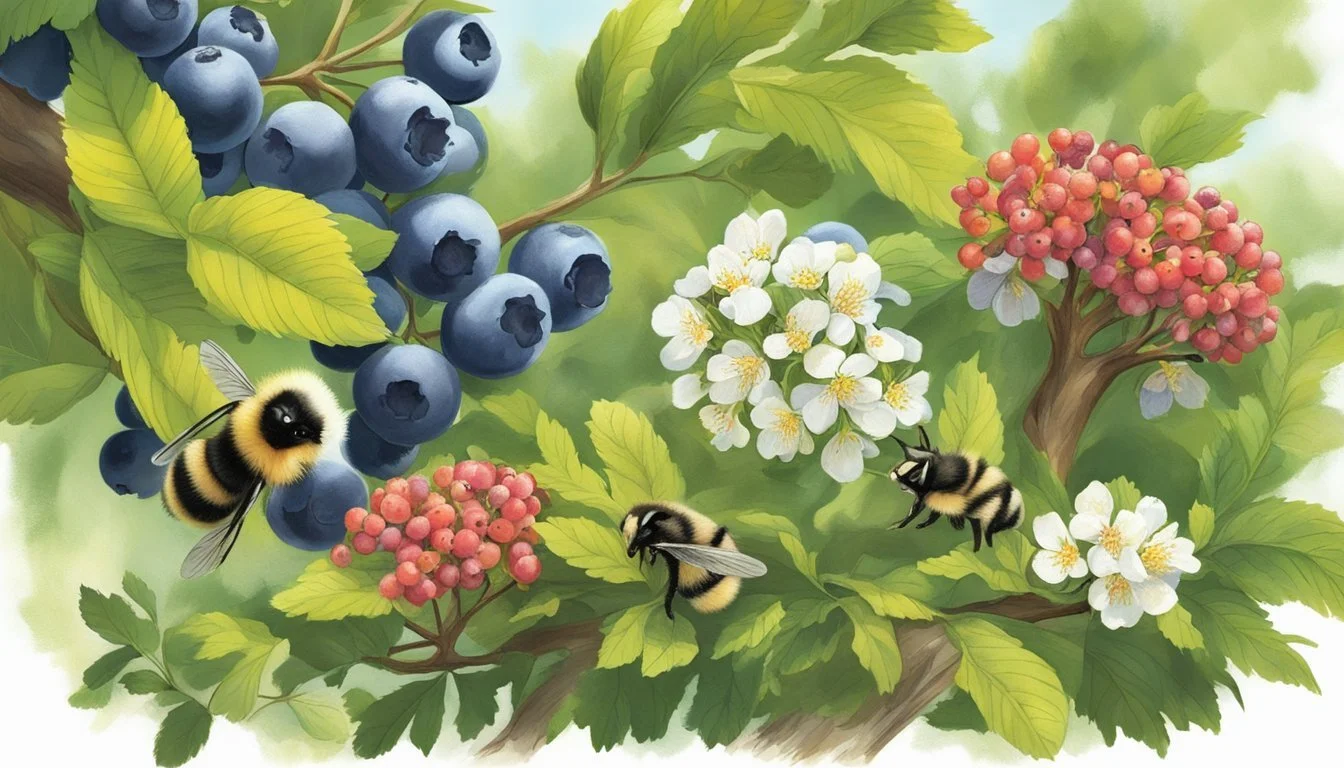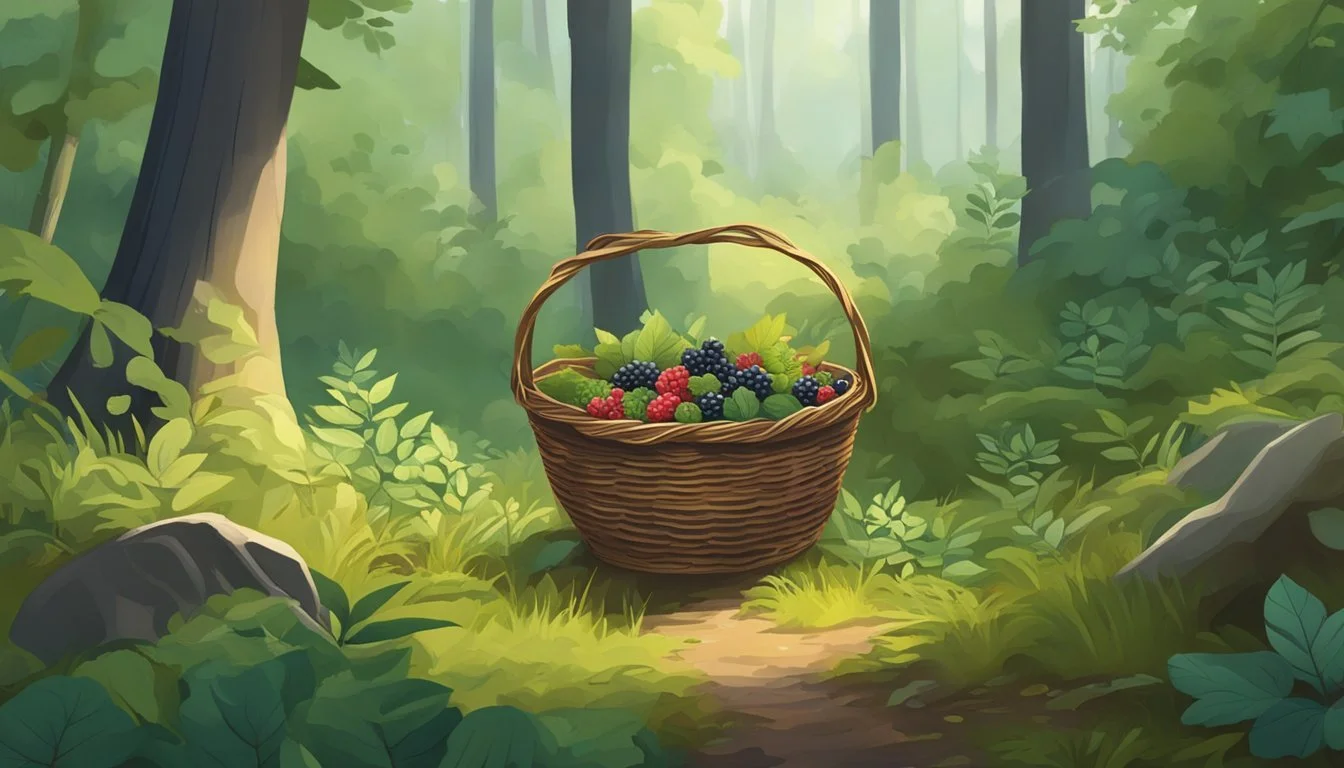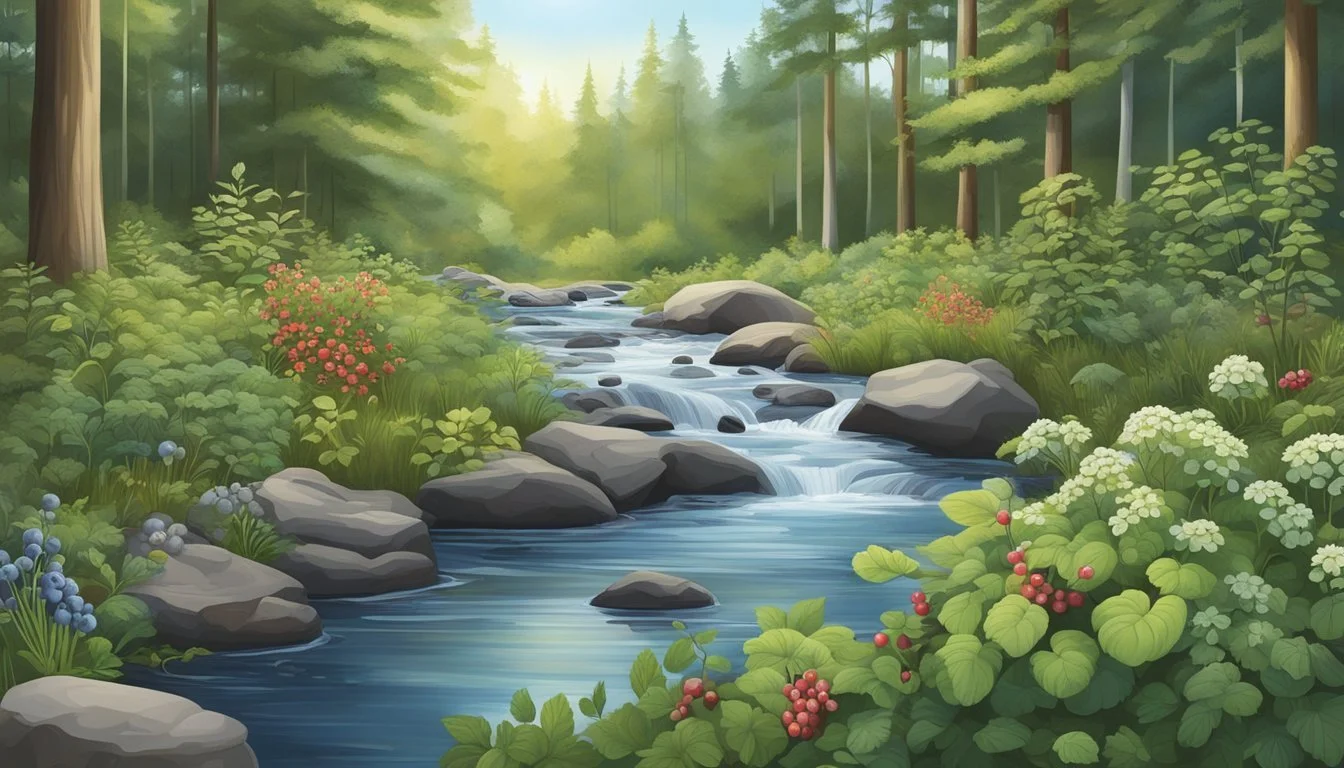Northeast Native Edible Plants
A Guide to Local Foraging
Foraging for native edible plants in the Northeast offers a unique opportunity to connect with the region's rich natural ecosystem. From wild persimmons to the famous pawpaw, these native plants not only support local wildlife but also provide sustainable food sources for those who know where to look. Incorporating these plants into your diet can enhance your food security while promoting ecological health.
Among the abundance of edible plants, certain species like juniper berries and milkweed stand out for their historical and culinary significance. Juniper trees, widely found in New England, are noted for their berries which impart a distinctive flavor to various dishes and are even used in gin production. Common milkweed, with its multiple edible parts, showcases the versatility and richness of native vegetation.
Educational resources and guides, such as Russ Cohen's comprehensive compilation on edible wild plants native to the Northeast, can greatly aid foragers. These resources not only detail plant identification but also cover safe consumption practices, ensuring that foragers can enjoy the bounty of their native landscape responsibly and knowledgeably.
Historical Context and Importance
Native plants in Eastern North America have played a crucial role in the diet and culture of indigenous peoples for centuries. These plants were not only a valuable food source but also provided medicinal and practical uses. Understanding the historical importance of these plants can help modern landowners and gardeners appreciate their value.
Milkweed (Asclepias syriaca) is a prime example. Indigenous peoples used its young shoots, buds, and pods as a vegetable after proper preparation to remove toxins. It also provided fibers for crafting.
Hickory trees, particularly Shagbark Hickory (Carya ovata), were prized for their edible nuts, which were a rich source of calories and nutrients. These nuts were often stored and used throughout the winter months, securing a vital food source during leaner times.
Another notable plant is the Pawpaw (Asimina triloba). Though primarily found further south, it has historical significance in the Northeast due to its delicious, banana-like fruit, which was consumed both fresh and dried.
Native plants were integrated into early gardening practices as well. For instance, landowners often cultivated these plants in their properties not only for culinary uses but also for their aesthetic and ecological benefits. The biodiversity provided by these native species supports local wildlife, helping maintain a balanced ecosystem.
Incorporating these plants into modern gardens honors their historical context and sustains their legacy. Moreover, it supports biodiversity, providing a sustainable and environmentally friendly option for gardening and landscaping.
Understanding the Ecosystem
To cultivate Northeast native edible plants successfully, it is essential to consider soil types, sunlight, and regional climate. These factors significantly impact plant growth and fruitfulness.
Soil Types and Plant Health
Different plants have specific soil preferences which influence their health and productivity. In the Northeast, native edibles thrive in various soil conditions. Key factors include soil acidity and drainage.
Many native species, such as blueberries, prefer moderately acidic soil. Testing and amending soil pH can ensure optimal conditions.
Well-drained soil is crucial for preventing root rot and other fungal issues. Raised beds or organic matter additions can improve drainage, benefiting species like milkweed and pawpaw.
Sunlight and Shade Requirements
Sunlight is vital for photosynthesis, influencing growth rates and yields. Most Northeast native edibles need full sun, which is six or more hours of direct sunlight daily. Examples include sun-loving plants like wild strawberries and sunflowers.
Shade-tolerant varieties, such as ramps and some ferns, can grow in less light, typically under forest canopies. These plants adapt well to dappled sunlight or shady garden spaces.
Balancing sunlight and shade in a garden helps accommodate a diverse range of plants, each with unique light needs.
Regional Climate and Seasons
The Northeast climate, characterized by cold winters and warm summers, impacts plant life cycles. Many native plants have adapted to these conditions, requiring winter dormancy followed by a growing season.
Spring and fall frost dates are critical for planting schedules. Cool-season plants like ramps are among the first to emerge, while others, such as pawpaws, need longer growing seasons.
Seasonal awareness helps gardeners plan effectively. Using hardiness zones can guide plant selection, ensuring that chosen species will withstand local temperatures and seasonal variations. Embracing native plants supports the local ecosystem by providing food sources for pollinators and wildlife.
Botanical Diversity in the Northeast
The Northeast region of the United States is home to a rich variety of native plants that enhance landscapes, support local wildlife, and provide edible resources. This botanical diversity includes a wide array of trees, shrubs, herbaceous plants, and aquatic species, each contributing uniquely to the ecosystem.
Trees and Shrubs
The forests of the Northeast are dominated by numerous tree species such as the Sugar Maple (Acer saccharum), known for its stunning fall colors and sap used in maple syrup production. Eastern Redbud (Cercis canadensis), with its vibrant pink flowers, and Silky Dogwood (Cornus amomum), offering berries that attract birds, are also notable.
Native shrubs, including the Witch Hazel (Hamamelis virginiana), provide winter interest with their late-season blooms. These trees and shrubs are critical both for their ecological contributions—providing shelter and food for wildlife—and for their aesthetic value in natural and cultivated landscapes.
Herbaceous Plants
The Northeast's herbaceous plant variety includes species like Wild Ginger (Asarum canadense), with its heart-shaped leaves and medicinal roots. Ramps (Allium tricoccum), a wild onion with a garlicky flavor, are highly prized by foragers.
Ferns and grasses, such as Ostrich Fern (Matteuccia struthiopteris) and Indian Grass (Sorghastrum nutans), play essential roles in groundcover and erosion control. These plants contribute to the region’s biodiversity by providing habitat and food sources for various insects and animals. Many of these herbaceous plants boast both culinary and traditional medicinal uses.
Aquatic and Wetland Plants
Wetlands in the Northeast are hubs of biodiversity, supporting numerous aquatic and semi-aquatic plants. Great Blue Lobelia (Lobelia siphilitica) and Cardinal Flower (Lobelia cardinalis), with their striking blue and red flowers respectively, attract pollinators such as hummingbirds and bees.
Various rushes and sedges thrive along the water's edge, stabilizing soil and filtering water. These plants, including varieties like Soft Rush (Juncus effusus), play crucial roles in maintaining healthy wetland ecosystems. Aquatic plants also provide vital habitat for fish and other wildlife, ensuring the overall health and functionality of these unique environments.
Key Species of Native Edible Plants
This section highlights essential native edible plants found in the Northeast U.S. and Eastern Canada. Key species include fruit-bearing trees and shrubs, nut-producing flora, and various edible understory and groundcover plants.
Fruit-Bearing Trees and Shrubs
Several native fruit-bearing trees and shrubs are crucial for foraging. The pawpaw (Asimina triloba) produces the largest edible fruit of any North American native plant, with a flavor reminiscent of banana and mango. Though non-native to some regions like Massachusetts, it can thrive in sheltered microclimates.
Wild persimmons (Diospyros virginiana), abundant from New York to Florida, yield fruits that are best harvested after a frost to reduce astringency.
Lowbush blueberry (Vaccinium angustifolium) thrives in acidic soils, producing sweet berries used fresh or in dishes like cranberry sauce. It is a cornerstone species in berry foraging.
Nut-Producing Flora
Nut-producing plants offer a vital source of protein and fats in the wild. The American beech (Fagus grandifolia), often found in hardwood forests, has nuts that ripen in September. The best harvesting trees are those in open environments.
The black walnut (Juglans nigra) is renowned for its rich and oily nuts. This tree flourishes in well-drained soils and spacious environments.
Hickory trees, including species like shagbark hickory (Carya ovata), produce edible nuts encased in hard shells. These nuts are traditionally cracked open and used in cooking for their rich, buttery flavor.
Edible Understory and Groundcover
The understory and groundcover layers in northeastern woodlands are home to several edible plants. The big-leaved aster (Eurybia macrophylla) is prominent, with young tender leaves that are edible when cooked.
Milkweed (Asclepias syriaca) requires proper preparation, as raw parts may contain toxins. After boiling, various parts such as young shoots, leaves, and pods are edible and nutritious.
While not as common, orache (Atriplex spp.) can also be found in some regions. This plant's leaves are edible and can be used similarly to spinach in meals.
By familiarizing themselves with these species, foragers can sustainably gather nutritious and diverse foods from the wild.
The Role of Pollinators and Wildlife
Pollinators and wildlife play a crucial role in the vitality of native edible plants in the Northeast. These elements contribute significantly to both the health of ecosystems and the availability of various food sources.
Attracting Beneficial Insects
Native plants are a magnet for beneficial insects, such as bees and butterflies. Species like the yellow-banded bumble bee and the rusty-patched bumble bee depend on these plants for nectar and habitat.
Providing a variety of wildflowers like milkweeds and bee balm not only adds beauty to the landscape but also ensures a continuous food supply for these pollinators.
Pollinator gardens can aid in reversing habitat losses. Organizations like the Lady Bird Johnson Wildflower Center and the Xerces Society provide resources to cultivate these habitats effectively.
Supporting Native Fauna
Native plants support a range of wildlife, including songbirds, squirrels, and other fauna. Plants like oak trees nourish caterpillars that are a food source for migratory birds.
Shrubs with berries, such as serviceberries and elderberries, provide critical sustenance to various animals.
Species maintained by the Native Plant Trust enhance biodiversity, making ecosystems more resilient. Wildlife dependent on these plants for shelter and food contributes to nutrient cycling and soil health, creating a balanced ecosystem.
Cultivation and Care
Proper cultivation and care are essential to grow healthy and productive native edible plants in the Northeast. Focus on the specifics of seeds and propagation and gardening tips for various species.
Seeds and Propagation
Most northeast native edible plants can be started from seeds, rhizomes, or cuttings. Seeds often require stratification, a process of cold treatment, to break dormancy. This mimics natural winter conditions.
For example, American cranberry thrives in acidic and consistently moist soil. The seeds should be sown in a peat-based mix with a pH between 4.0 and 5.2. Cover seeds lightly with soil and keep them moist.
Pawpaw (Asimina triloba) also prefers rich, well-drained soil. Its seeds need to be stratified for 70 to 100 days at temperatures between 32°F and 41°F. Transplant seedlings in spring when temperatures are stable.
Gardening Tips for Various Species
A mix of full sun and partial shade is ideal for many species. For instance, American hop-hornbeam can tolerate a range of light conditions, from full sun to partial shade.
When planting, use well-drained soil. Mulching helps retain moisture and suppress weeds.
Spicebush (Lindera benzoin) thrives in moist, well-drained soils. It prefers partial shade and can be used in shady areas of landscaping. Regular watering during dry periods ensures strong growth.
Common milkweed (Asclepias syriaca) is hardy and low-maintenance but requires full sun and well-drained soil. It's crucial for supporting monarch butterflies, making it an excellent choice for eco-friendly gardens.
These gardening tips ensure that each species receives the specific care it needs to thrive. Proper planning and maintenance lead to successful cultivation.
Harvesting and Use
Foraging for native edible plants in the Northeast can be both rewarding and delicious. Understanding the proper techniques for harvesting and incorporating these plants into recipes is essential.
Foraging Techniques
Successful foraging requires knowledge of plant identification, habitat, and growth seasons. Bring a guidebook to accurately identify wild plants, like blueberries or ramps, which are commonly found in the region.
When collecting, use clean scissors or a knife to cut plants gently. Avoid over-harvesting by taking no more than one-third of a plant's leaves or fruits to ensure sustainability.
For plants such as watercress, look for clean, shallow waters. Ensure the area is pollution-free to avoid contaminants. Remember, safe foraging preserves both the environment and the edible resources.
Edible Plant Recipes
Incorporating foraged foods into your meals can enhance flavors and nutritional value. Ramps, with their garlicky flavor, are perfect in scrambled eggs or as a pesto ingredient.
Blueberries can be eaten fresh, added to salads, or baked into pies for a sweet treat. Spicebush berries, noted for their unique flavor, can be dried and used as a spice in teas or meat rubs.
Experimenting with different wild plants like orache and pawpaw in various recipes adds diversity and excitement to your culinary adventures.
Conservation and Sustainability
Effective conservation of native edible plants in the Northeast U.S. is crucial for maintaining biodiversity and ensuring food security. These plants play a significant role in the ecosystem and provide valuable food resources for both humans and wildlife.
Landowners can contribute to conservation efforts by maintaining natural habitats on their property. They should avoid using harmful pesticides and instead opt for sustainable practices that promote the growth of native species.
To minimize environmental impact while foraging, individuals should follow sustainable foraging guidelines. This includes foraging in small groups, avoiding trampling plants, and refraining from creating new trails. This ensures that wild populations are not overharvested and can continue to thrive.
Organizations like the Native Plant Trust are pivotal in conserving native plants. Their initiatives include creating seed-increase plots to study and enhance sustainable native seed production. This type of research is essential for long-term conservation strategies.
Strengthening policies around wild food plant conservation is also key. Guidelines exist to help regions implement national plans for the conservation and sustainable use of wild food plants. These plans often include monitoring for WFP diversity, ensuring that plant populations remain robust.
In summary, the conservation and sustainability of native edible plants require a combined effort of landowners, foragers, and organizations dedicated to preserving these valuable species for future generations. Proper practices and policies can significantly contribute to this mission.
Educational Resources
Educating oneself about native edible plants in the Northeast can be highly rewarding. Many resources are available for those interested in learning more.
For comprehensive guides, Russ Cohen's compilations are invaluable. His lists include detailed information about edible wild plants native to the Northeast U.S. and Eastern Canada, making it a must-have for enthusiasts.
Books are also excellent resources. The "Field Guide To Edible and Medicinal Plants of Eastern North America" is especially useful. It covers a variety of plants found in the Carolinian forest ecosystem, wetlands, and grasslands.
The National Wildlife Federation provides educational content on American native plants. Their articles often highlight plants that are both edible and beneficial to wildlife, such as wild persimmons and pawpaws.
Here are some resources to get started:
Books: "Edible Wild Plants Native to the Northeast and Eastern Canada" by Russ Cohen.
PDF Guides: Various free online PDFs like "Edible Plant Species Native to the Northeast U.S. and E. Canada".
Websites: National Wildlife Federation, local extension services, and botanical gardens.
Workshops and Field Courses offered by nature centers and local environmental groups provide hands-on experience. These programs often include plant identification, foraging techniques, and preparation methods.
Online Forums and Communities can be valuable too. Platforms like iNaturalist, Reddit, or specialized Facebook groups allow for sharing information and personal experiences with other foragers.
Incorporating these resources can greatly enhance knowledge and confidence in identifying and utilizing native edible plants.

